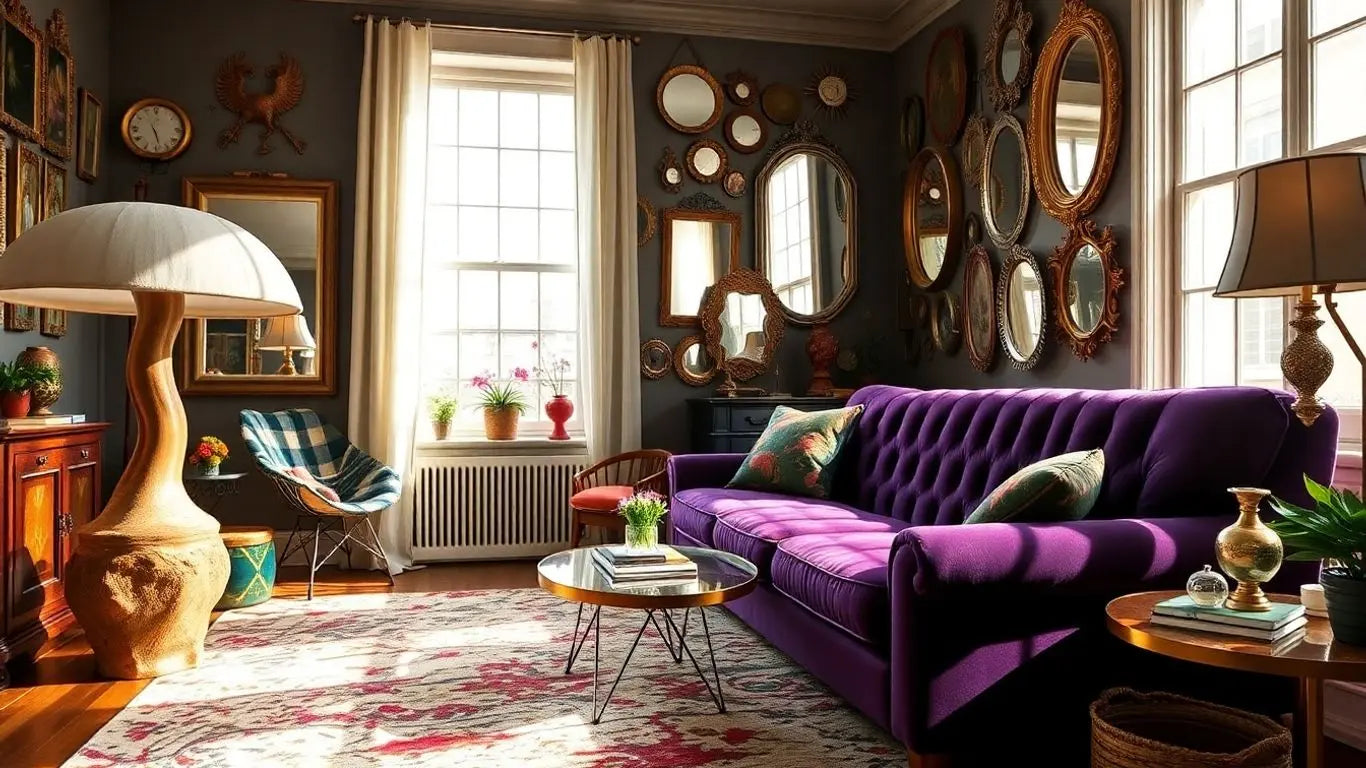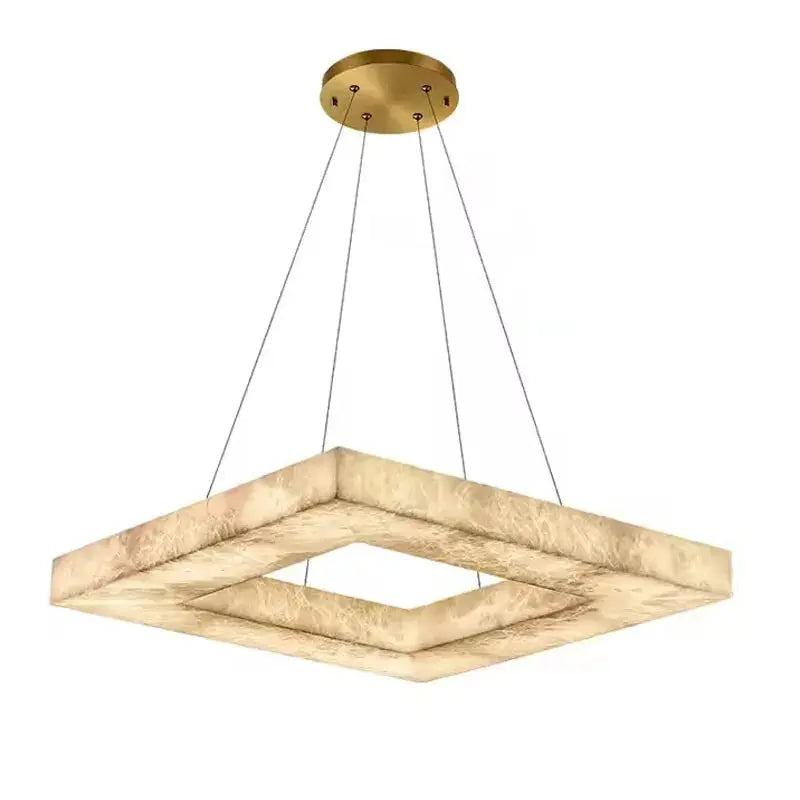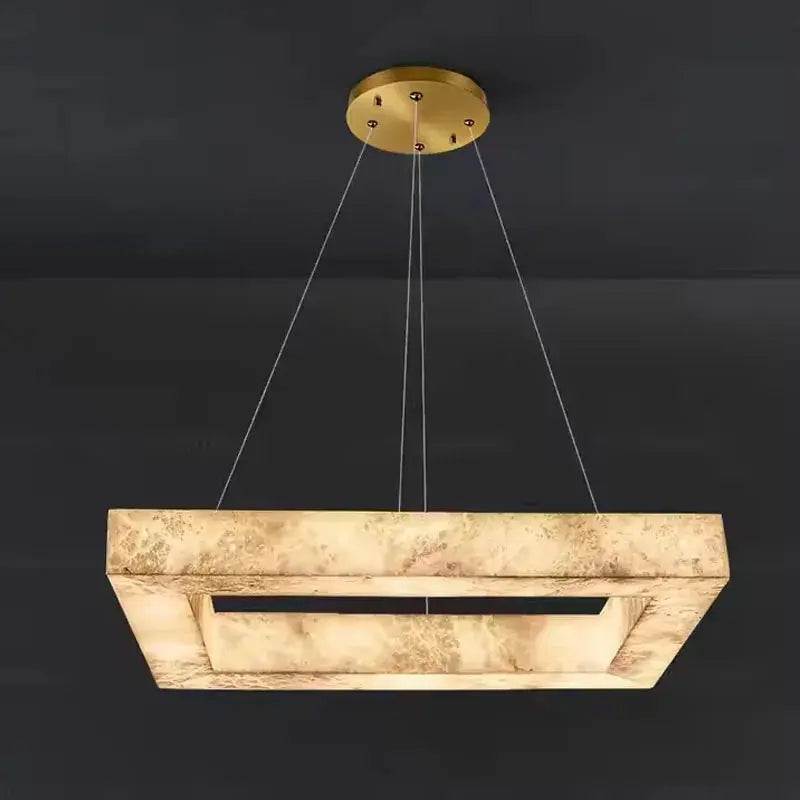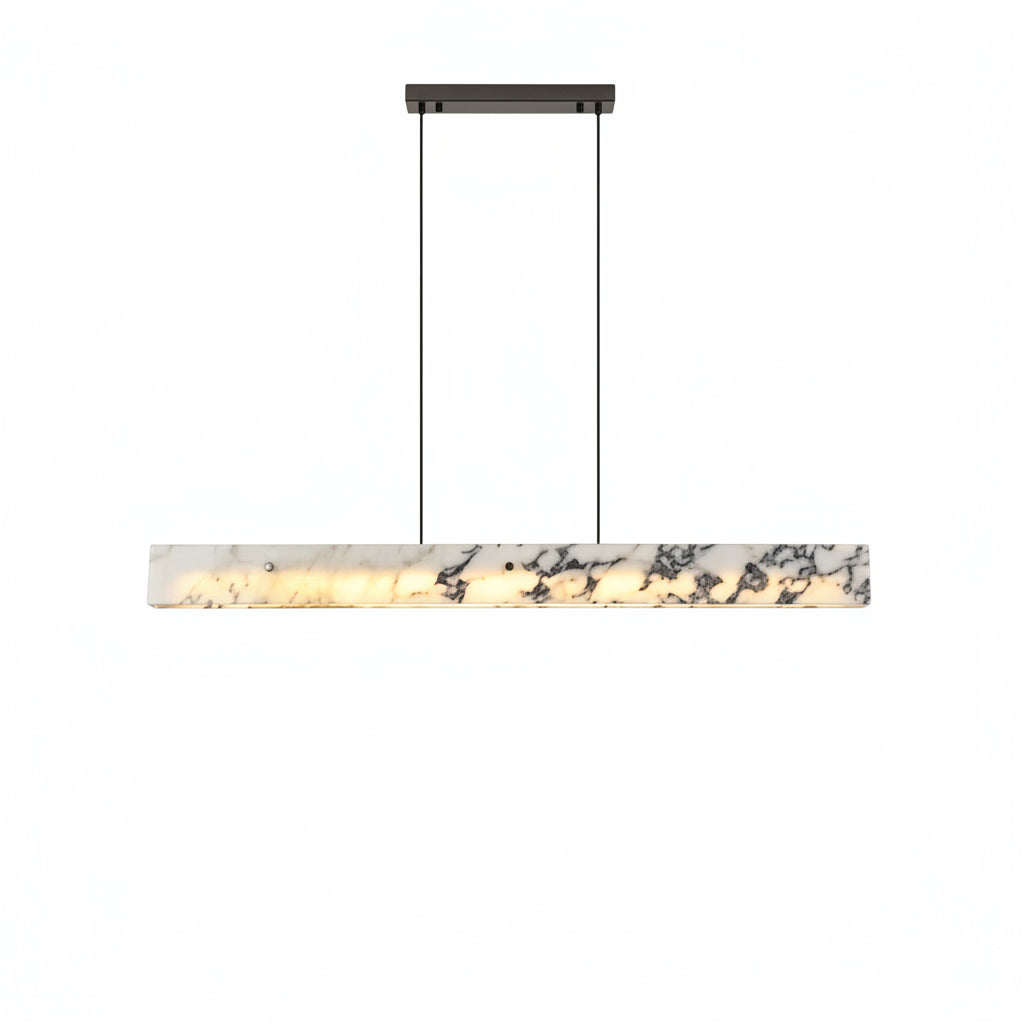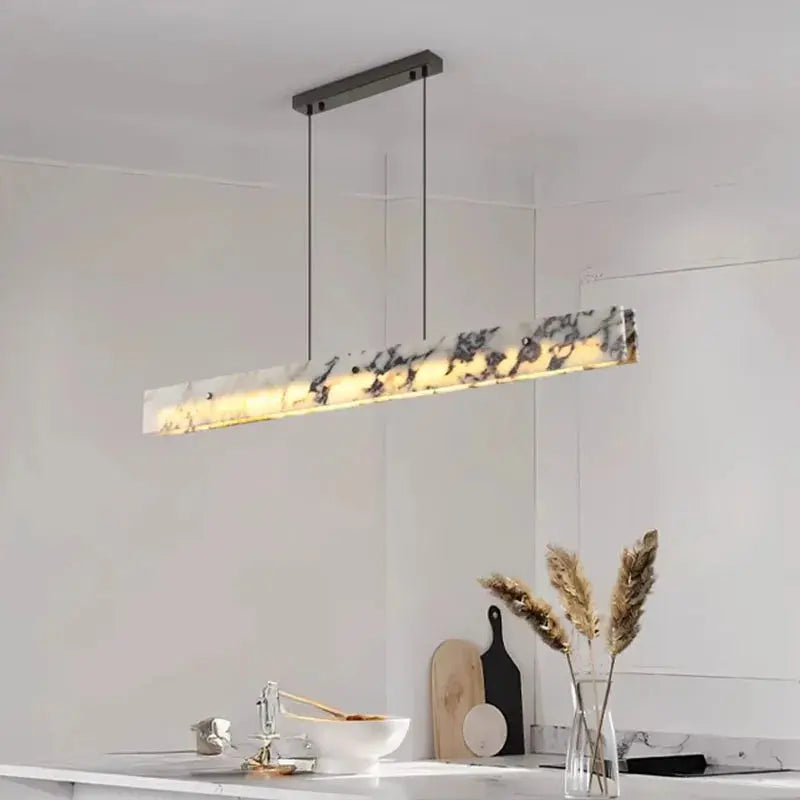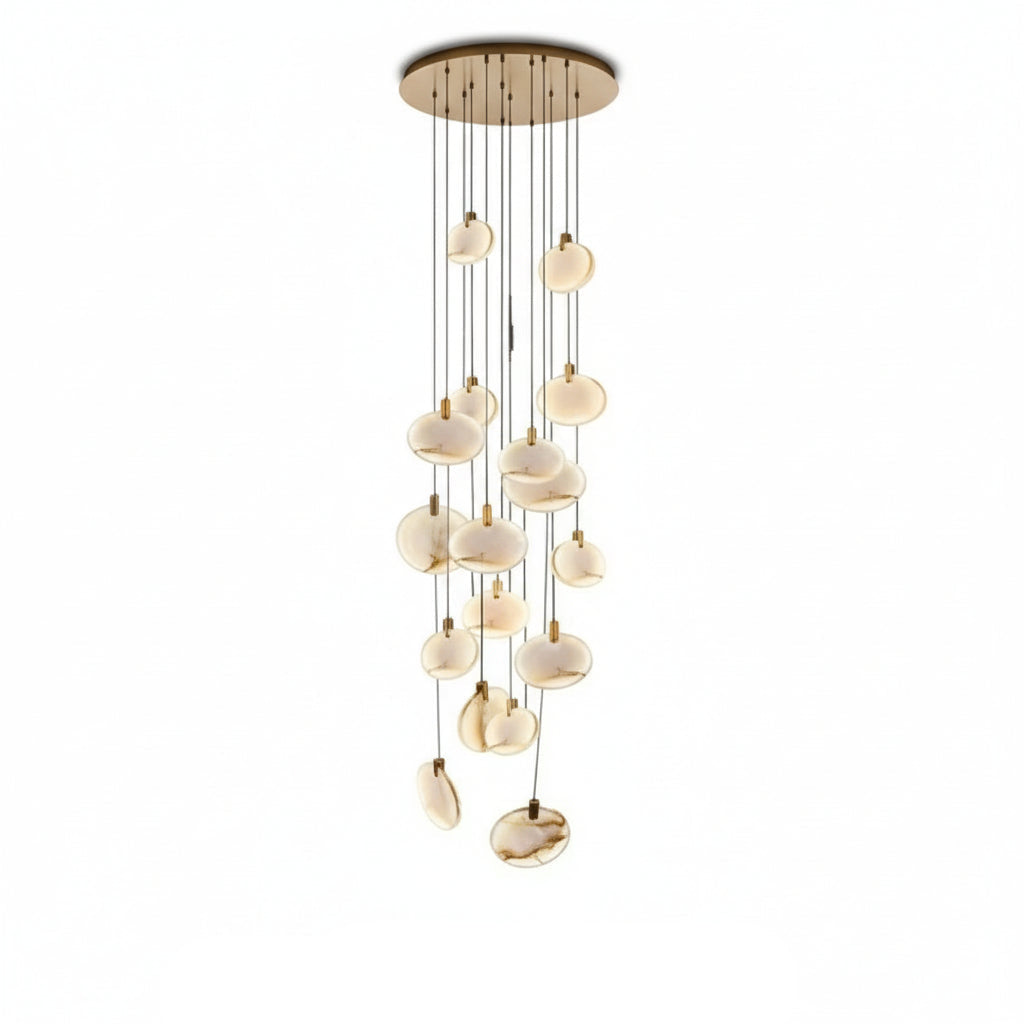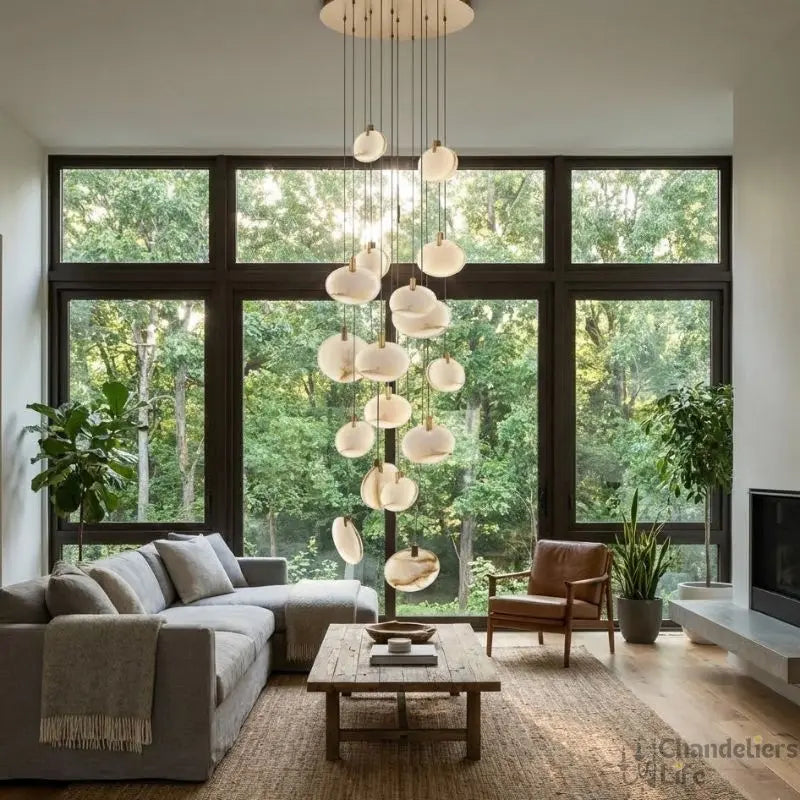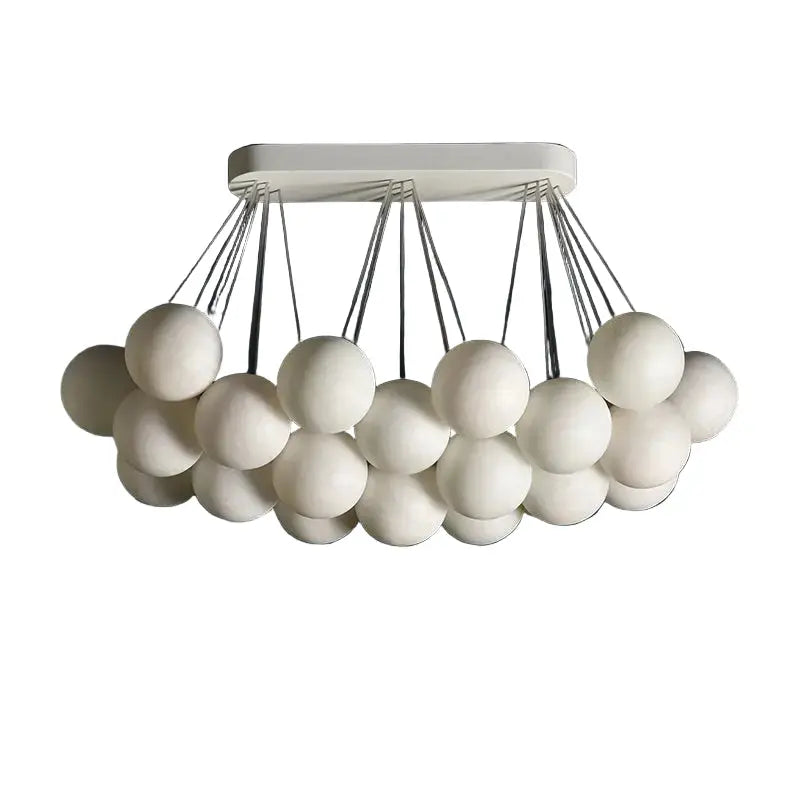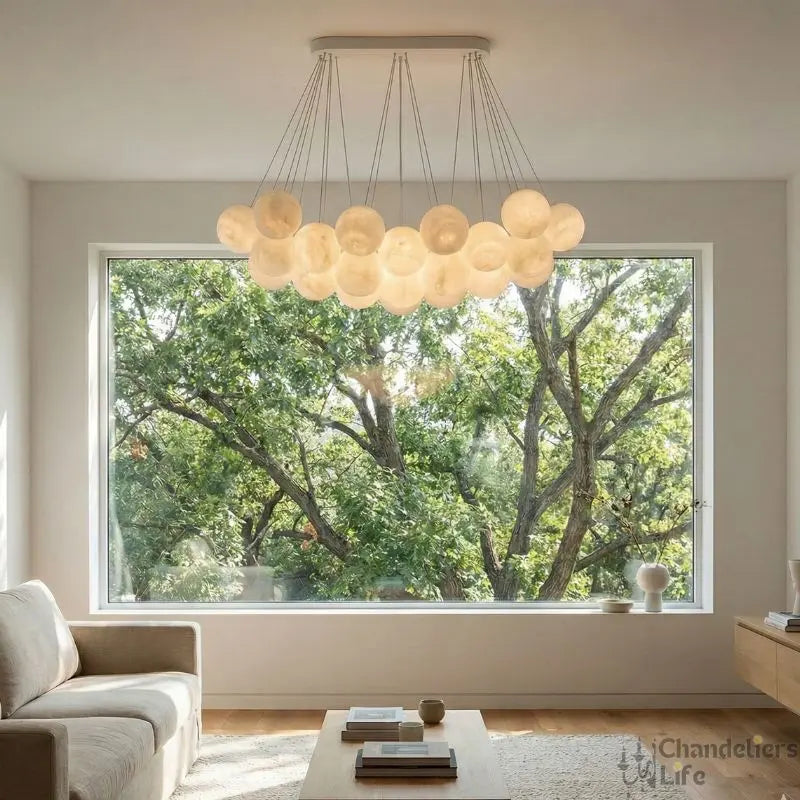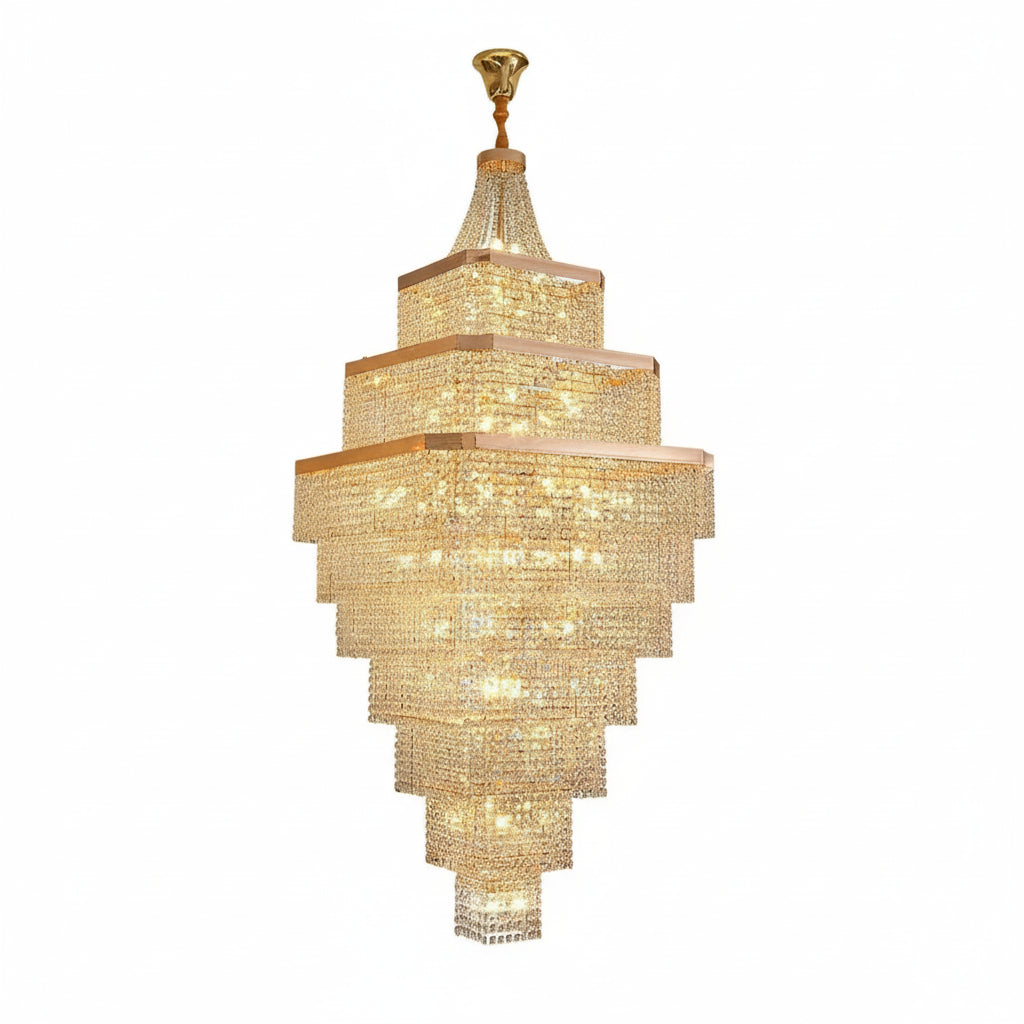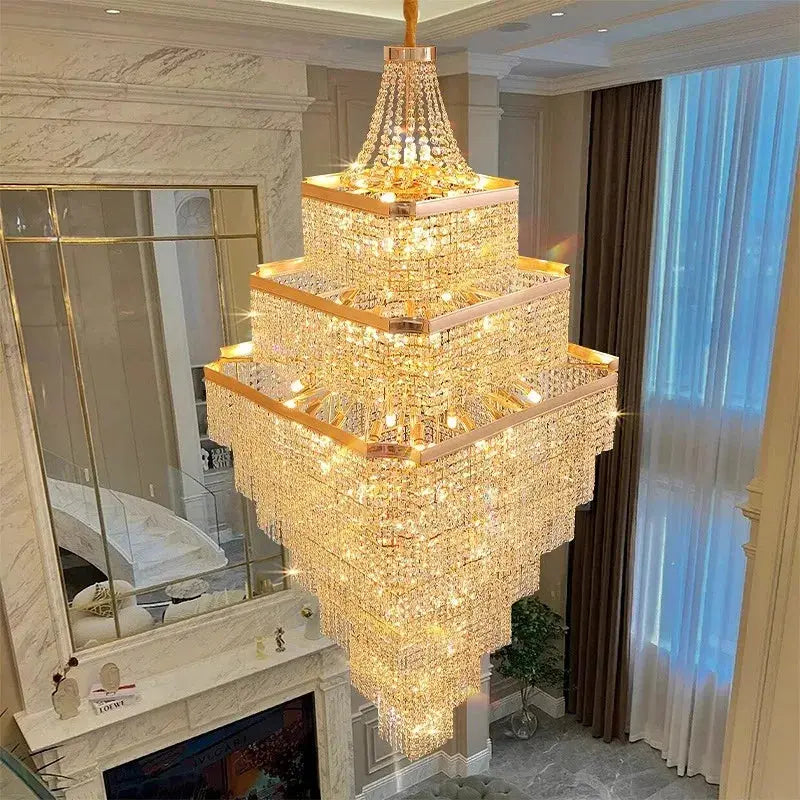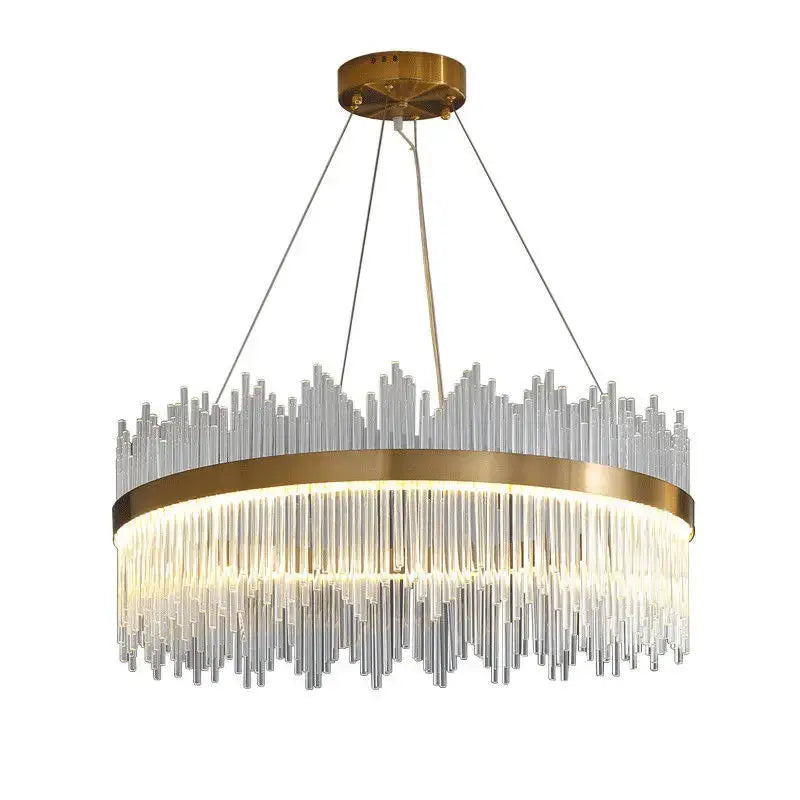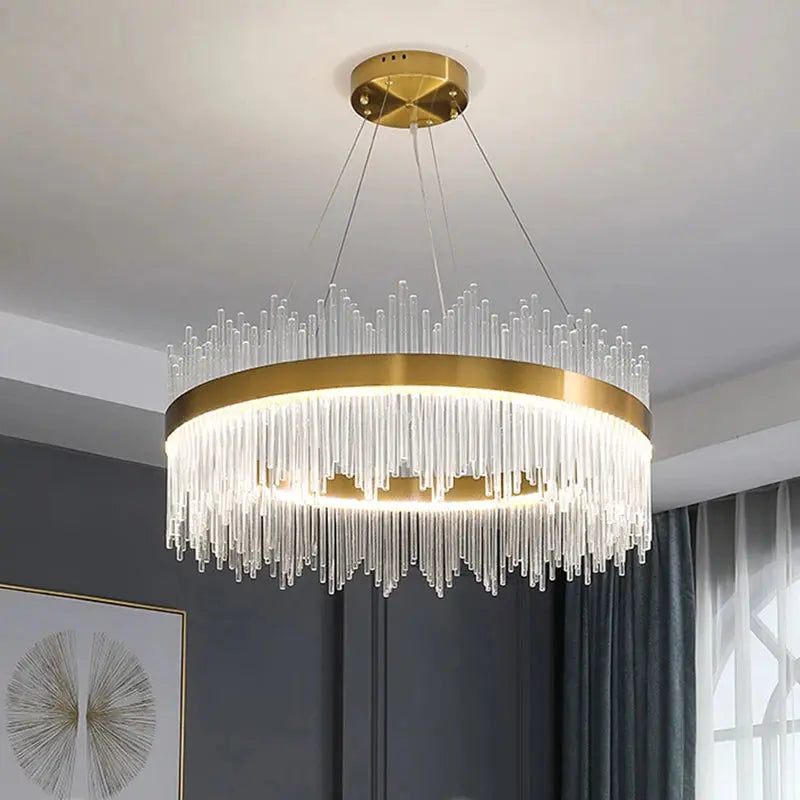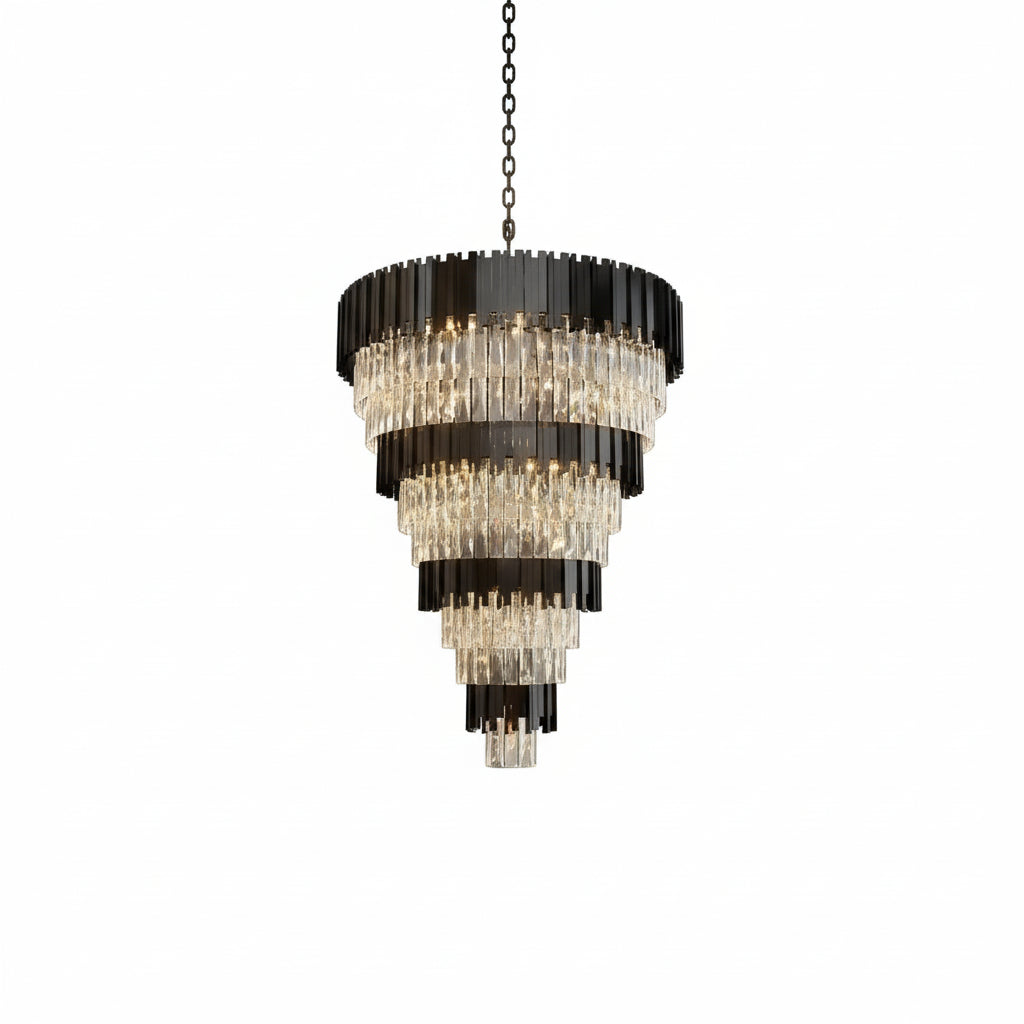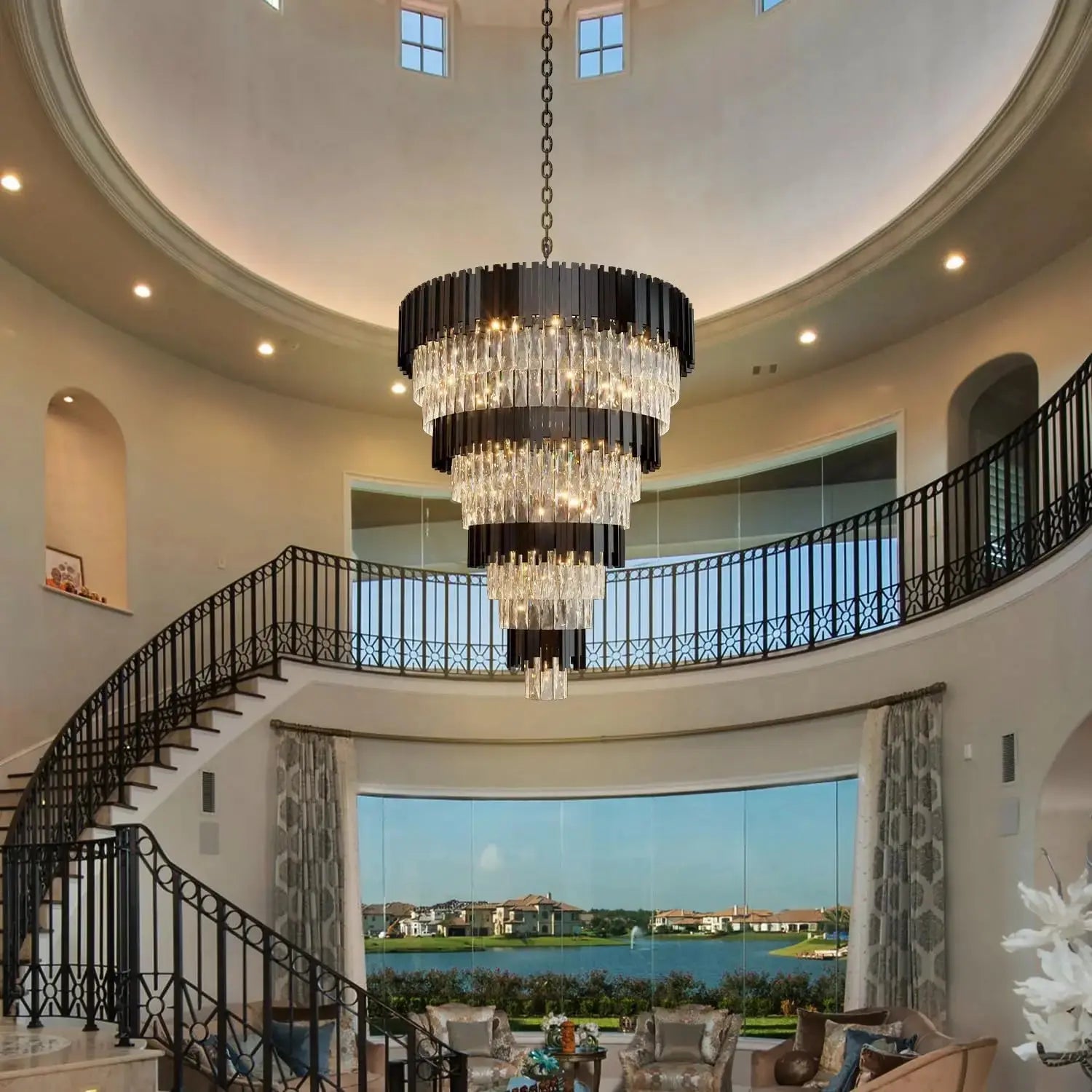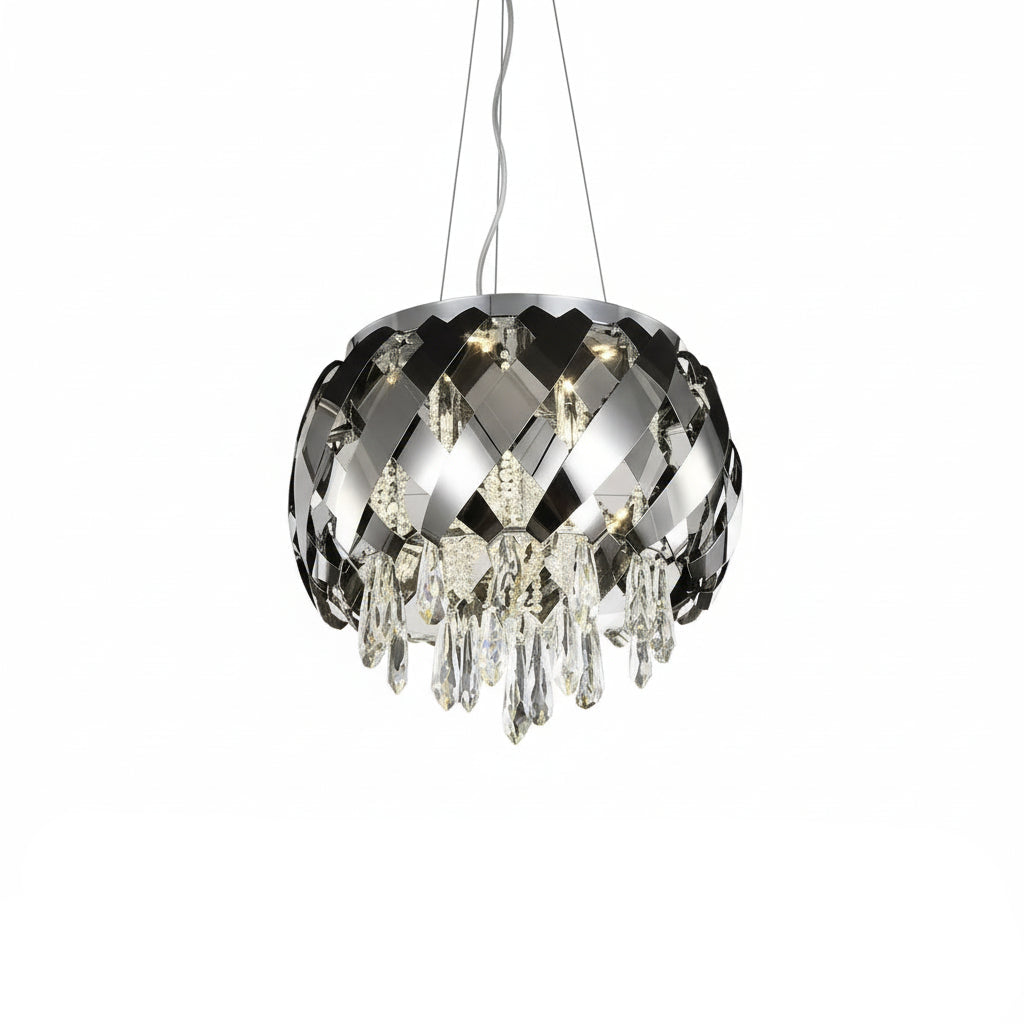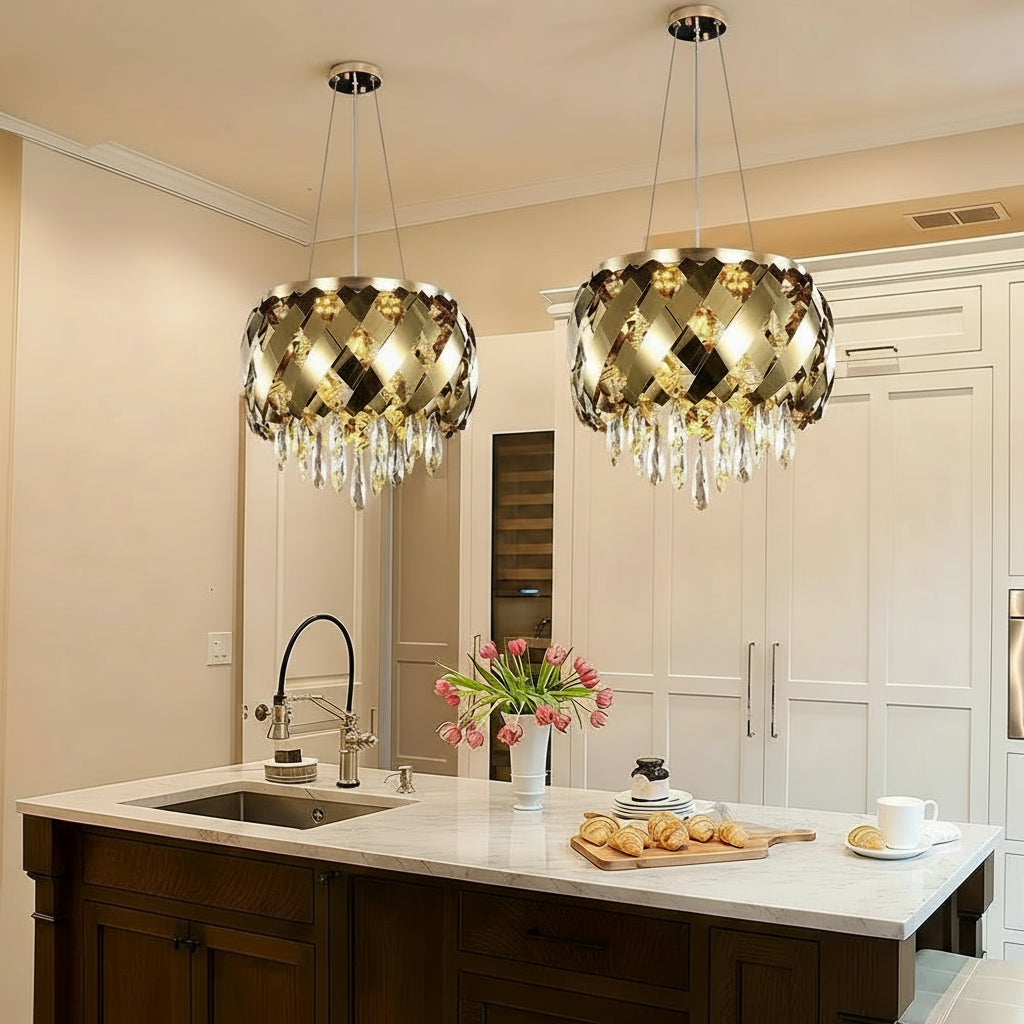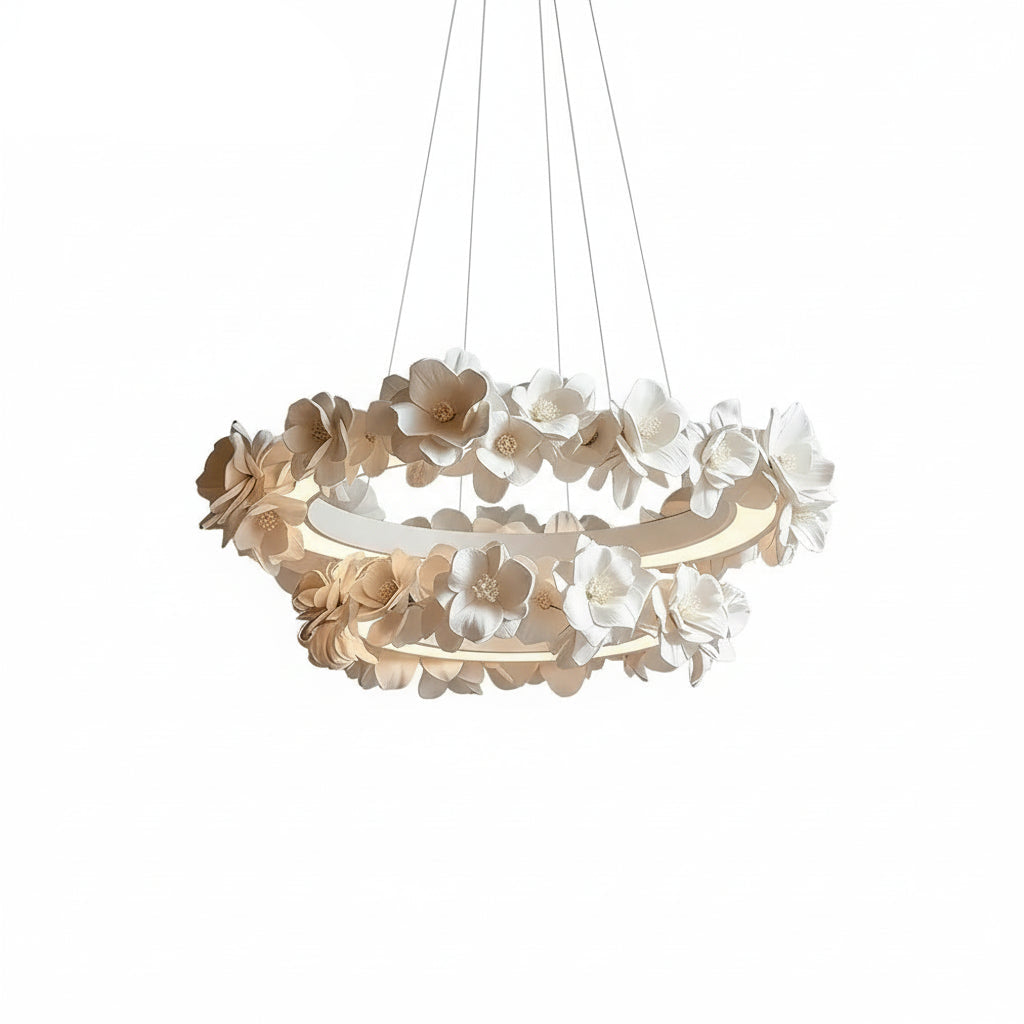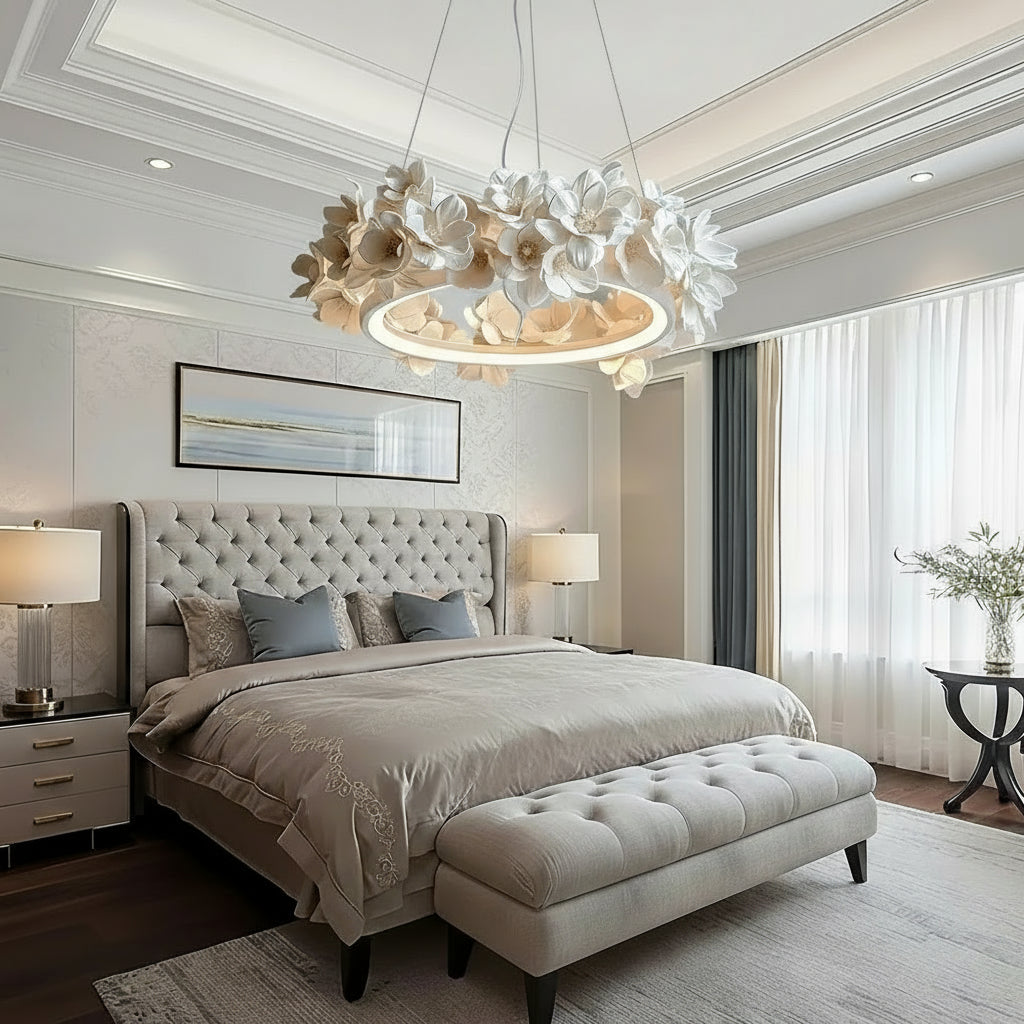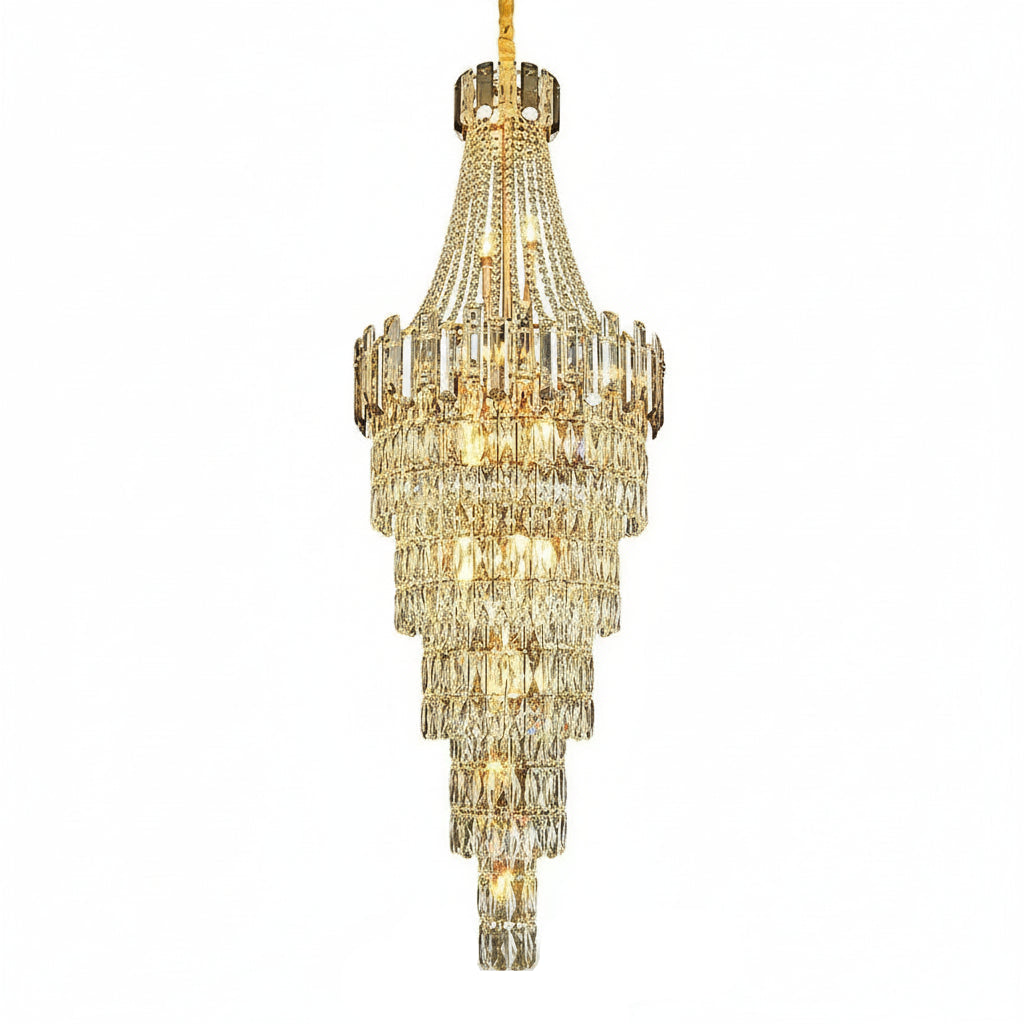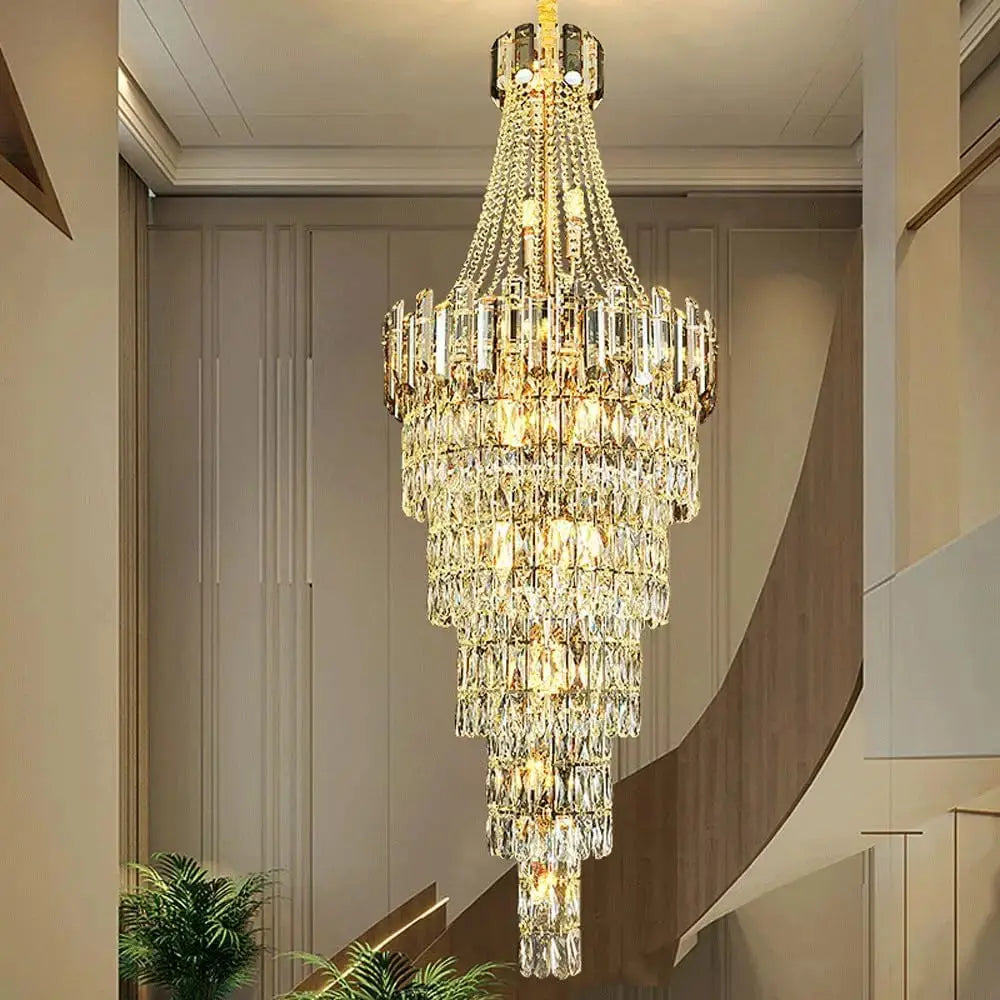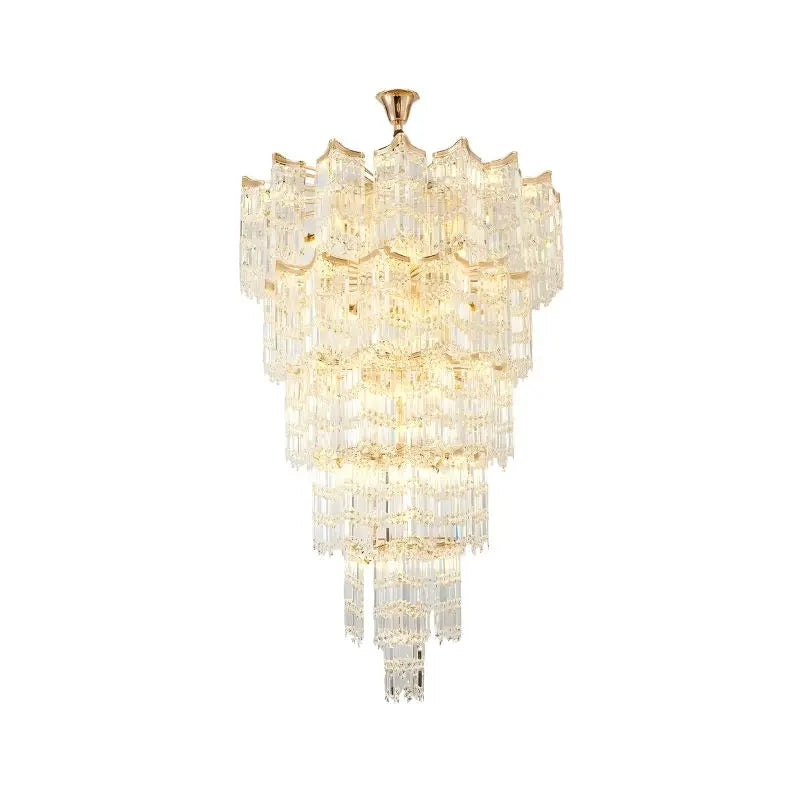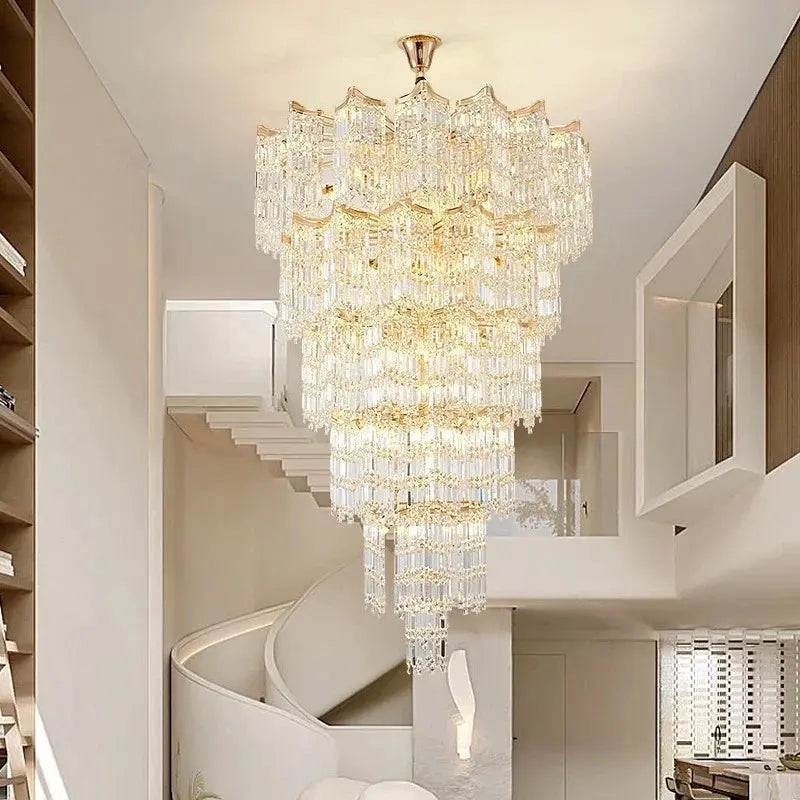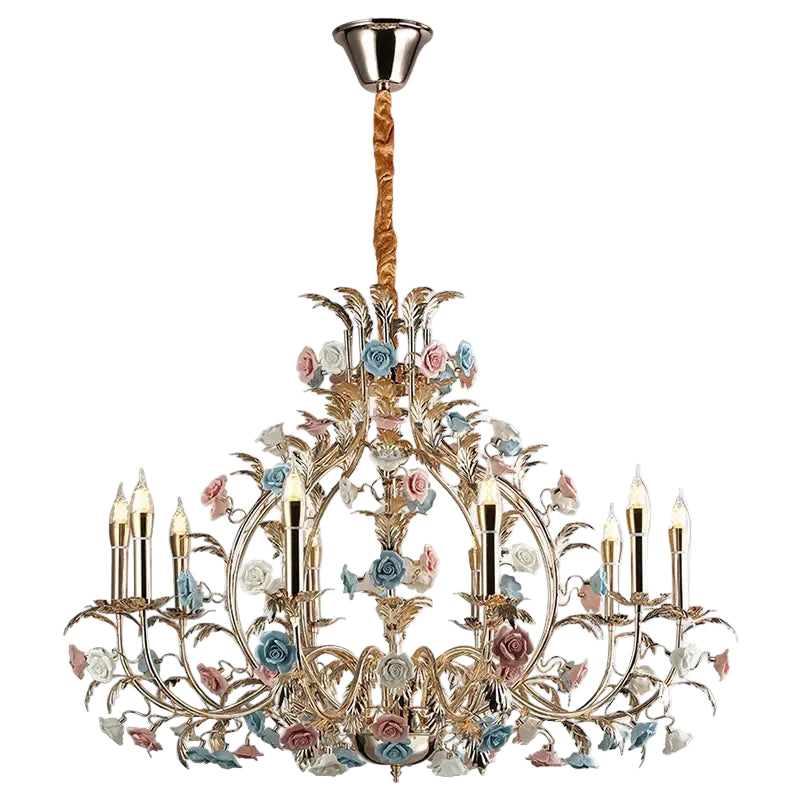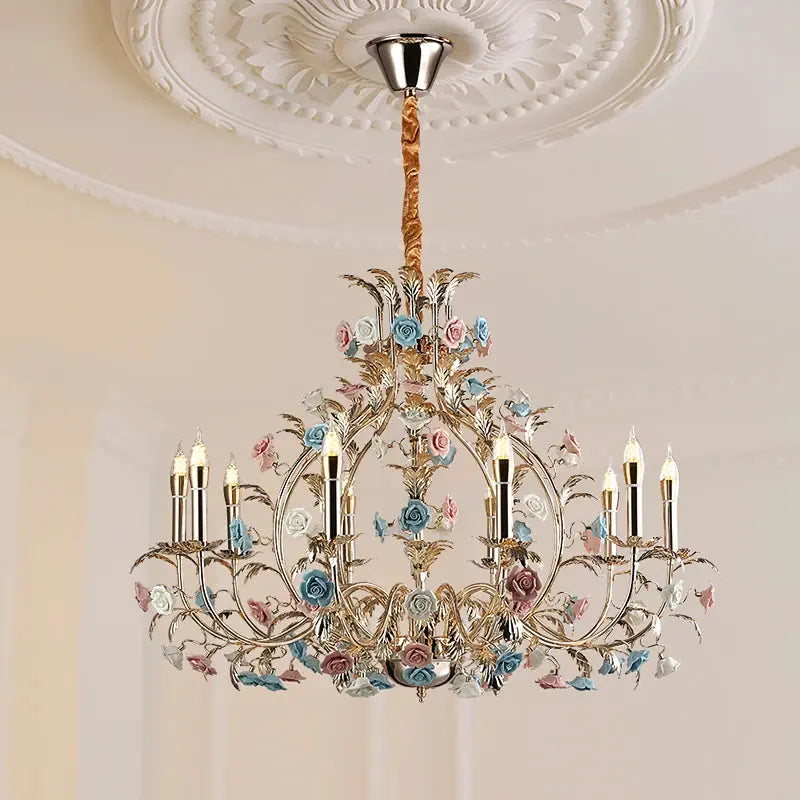So, 2025 is almost here, and you know what that means – new home decor trends! It feels like just yesterday we were figuring out what was cool for this year, and now we're looking ahead. It's kind of exciting, right? Like getting a sneak peek at what's going to make our homes feel fresh and totally 'us'. This year, it seems like we're moving away from just following the crowd and really focusing on making our spaces unique. Think less about what's 'in' and more about what makes you happy. We're seeing a lot of nature-inspired stuff, colors that pop, and a real push for things that feel personal. Plus, with how much time we spend at home now, making them functional and maybe even a bit smarter makes a lot of sense. It’s all about creating a place that’s not just pretty, but also works for how we actually live.
Key Takeaways
- Nature is making a big comeback in home decor, with earthy colors and natural materials like wood and stone becoming super popular. Think organic shapes and a general feeling of calm.
- Get ready for some serious color! Maximalism is back, meaning bold hues and lots of interesting details. Jewel tones are especially hot for adding warmth and personality.
- Your home should be about you. Expect to see more personalized decor, like handmade items and curated collections of things you love, mixed with vintage finds.
- Technology is quietly weaving itself into our homes. Look for smart furniture and integrated systems that make living easier and more energy-efficient.
- Being kind to the planet matters. Sustainable materials, reclaimed items, and local sourcing are key trends for a more eco-conscious home.
Embracing Nature's Palette: Earthy Tones And Organic Forms

It feels like everyone's getting tired of stark white walls and super modern, minimalist looks. For 2025, the big move is towards bringing the outside in, and honestly, it's a welcome change. We're talking about colors that feel like they came straight from the earth – think warm browns, deep greens, soft terracottas, and muted grays. These aren't just colors; they're moods. They create a sense of calm and comfort that's hard to beat, making your home feel like a true sanctuary.
The Power Of Natural Materials
This trend isn't just about paint colors, though. It's really about the stuff we use to build and decorate our homes. Materials like reclaimed wood are huge. Not only are they good for the planet, but they also bring so much character. A wooden table or shelf made from old timber tells a story. Then there's stone – whether it's for a countertop, a floor, or even just a decorative piece, it adds a solid, grounded feel. And don't forget fabrics. Natural fibers like cotton, linen, and hemp feel good and look great, adding texture and warmth. It’s all about creating a space that feels connected to the natural world.
Rustic Charm With Handmade Wooden Decor
Handmade wooden decor is really having a moment. Forget mass-produced items; people are looking for pieces with soul. Think carved bowls, wooden sculptures, or even just beautifully crafted cutting boards. These items add a unique touch that you just can't get from something made in a factory. They bring a rustic charm that feels both authentic and inviting. It’s a way to support artisans and bring something truly special into your home. You can find some really unique lighting fixtures that fit this vibe too, like artistic chandeliers that feel like sculptures.
Organic Shaped Furniture And Stone Accents
When it comes to furniture, the shapes are softening. We're seeing more pieces with rounded edges and flowing lines, mimicking forms found in nature. Think sofas that curve gently or tables with organic, irregular shapes. This is paired with stone accents. Maybe it's a stone-topped coffee table, a slate accent wall, or even just decorative stone pieces scattered around. These elements work together to create a space that feels natural, comfortable, and deeply calming. It’s a departure from sharp angles and hard lines, favoring a more fluid and organic aesthetic.
The shift towards earthy tones and natural forms in home decor is more than just a passing fad; it's a reflection of our growing desire for tranquility and connection in our living spaces. By incorporating these elements, we create environments that are not only beautiful but also deeply restorative.
Here's a quick look at how to bring this trend home:
- Color Palette: Focus on browns, greens, terracottas, and muted grays.
- Materials: Prioritize wood (especially reclaimed), stone, cotton, linen, and hemp.
- Furniture: Opt for pieces with rounded edges and organic shapes.
- Accents: Incorporate natural elements like plants, stone objects, and handmade wooden items.
- Texture: Layer different textures – think rough wood with soft linen throws.
Bold Statements: Maximalism And Vibrant Color Revivals
Maximalism: Bold Colors And Extra Details
Forget the quiet, neutral rooms for a minute. 2025 is all about making a statement, and maximalism is leading the charge. This trend is a big, beautiful embrace of color, pattern, and texture. Think of it as your home's personality turned up to eleven. It's not just about throwing a lot of stuff into a room; it's about curating a space that feels rich, layered, and deeply personal. We're seeing a real push back against the minimalist wave, with people wanting their homes to feel more alive and expressive. This means bold wallpapers that might cover every surface, or furniture in colors you might have previously thought were too much. It's about creating a visual feast that tells a story.
Maximalism is a style that encourages you to be bold and unapologetic. It’s about filling your space with things you love, creating a layered look that feels both curated and collected over time. Don't be afraid to mix patterns, clash colors, and layer textures. The key is to make it feel intentional and cohesive, even with all the elements at play.
- Color Drenching: Painting walls, trim, and even ceilings in the same bold hue. This makes a space feel cohesive and impactful.
- Pattern Play: Mixing different patterns, from florals to geometrics, often on walls, upholstery, and accessories.
- Layered Textures: Combining various materials like velvet, silk, rough wood, and metal to add depth and interest.
- Statement Pieces: Incorporating unique furniture or art that acts as a focal point.
Jewel Tones For Warmth And Vibrancy
While maximalism is about abundance, jewel tones bring a specific kind of richness to the party. Think deep emerald greens, sapphire blues, ruby reds, and amethyst purples. These colors aren't just bright; they have a depth and intensity that feels luxurious and inviting. They're perfect for creating a warm, enveloping atmosphere, especially as we move into cooler seasons or just crave a bit more coziness. These shades can be used on a large scale, like painting a whole room, or as accents through upholstery, rugs, or decorative items. They have a way of making a space feel sophisticated without being stuffy.
Creating Focal Points With Intense Hues
Using intense colors is a smart way to guide the eye and define areas within a room. A vibrant accent wall in a deep teal or a striking mustard yellow can instantly draw attention and set the tone for the entire space. This doesn't mean the rest of the room has to be bland; it's about creating a deliberate point of interest. You can achieve this with furniture too – a single armchair in a bold fuchsia or a collection of brightly colored cushions on a neutral sofa. The idea is to use these strong colors strategically to add energy and personality, making your home feel dynamic and uniquely yours. It’s about making deliberate choices that pack a visual punch.
The Art Of Individuality: Personalized And Eclectic Decor
Forget cookie-cutter homes; 2025 is all about making your space truly you. This year, personalization isn't just a nice-to-have, it's the main event. We're moving beyond just picking out furniture and calling it a day. It's about creating a home that tells your story, piece by piece.
Personalized Handmade Pieces
Mass-produced items are taking a backseat. Think unique finds from local artisans or custom-made furniture that fits your exact needs and style. It’s about the character and soul that handmade objects bring into a room. Whether it's a quirky ceramic vase or a custom-built bookshelf, these items add a layer of authenticity that you just can't get from a big box store. Commissioning a piece from a local artist, for instance, not only supports creators but also ensures you have something truly one-of-a-kind. It’s a way to bring art into your daily life that speaks directly to you. You can even find some really cool, artistic lighting options that feel totally custom, like this colorful pendant lamp.
Curating Meaningful Collections
Your home should be a reflection of your life's journey. This means displaying those things you've collected over time – souvenirs from trips, family heirlooms, or even just items that spark joy. It's not about clutter; it's about thoughtful curation. Arranging these items intentionally creates conversation starters and adds depth to your decor. Think about creating a gallery wall with personal photos and art, or dedicating a shelf to your favorite books and mementos.
Vintage And Retro Aesthetics
Mixing old with new is a huge part of this trend. Don't be afraid to bring in those vintage finds! A mid-century modern dresser can look amazing paired with contemporary art, for example. It’s about creating a dialogue between different design eras. This approach adds a sense of history and character to your home, making it feel lived-in and unique. Balancing these older pieces with modern elements keeps the space feeling fresh and relevant, not like a museum.
The most successful personalized spaces blend emotional connection with good looks. It's not just throwing random stuff around; it's carefully picking things that show who you are. Your home becomes a living, breathing space that shows your inner world – a safe spot that feels good and tells your unique story through things you've chosen with care.
Here’s a quick look at how to weave these elements together:
- Handmade Items: Look for unique pottery, textiles, or art from local craftspeople.
- Personal Collections: Display travel souvenirs, books, or inherited items.
- Vintage Finds: Mix antique furniture or decor with modern pieces.
- Art: Choose artwork that speaks to you, whether it's a painting, print, or photograph.
- Color: Use colors that make you feel good, even if they're bold.
Seamless Integration: Technology Meets Home Design

Tech-Integrated Furnishings For Intuitive Living
Forget clunky gadgets and visible wires. In 2025, technology is becoming part of the furniture itself, designed to blend in and make life easier. Think coffee tables with built-in wireless chargers, or bedside cabinets that gently illuminate your path at night. These aren't just fancy additions; they're about creating spaces that feel more responsive to what you need, often without you even having to think about it. It’s like your home is starting to get a little bit smarter about looking after you.
Smart Home Integration For Tailored Environments
Smart home systems are moving beyond just turning lights on and off. Now, they're about creating whole environments that adapt to you. Imagine your home adjusting the temperature based on who's home, or your lighting subtly shifting throughout the day to match natural light patterns. It’s about making your living space truly yours, a place that learns your routines and preferences. This kind of tailored environment can make a big difference in how comfortable and relaxed you feel at home.
Voice Controls And Energy-Saving Technologies
Voice control is getting more natural and less like you're talking to a robot. You can manage your home's systems with simple, everyday phrases. Alongside this, there's a big push for energy-saving tech. Smart thermostats that learn your schedule, lighting that dims when you leave a room, and appliances that use power more wisely are becoming standard. It’s a win-win: you get convenience and a home that’s kinder to the planet and your wallet.
The goal with integrating technology into our homes in 2025 is to make it feel less like a collection of devices and more like an extension of our own intuition. It should simplify, not complicate, and ultimately contribute to a more comfortable and efficient living experience.
Sustainable Living: Eco-Conscious Materials And Practices
Sustainable Materials for Versatile Aesthetics
This year, it's all about making choices that are good for the planet and look great in your home. We're seeing a big move towards materials that don't harm the environment. It's not just a trend; it's becoming a standard way of thinking about home design. People are realizing that what we use to build and decorate our homes has a real impact.
The focus is on materials that have a lower environmental footprint from start to finish. This means looking at how things are made, where they come from, and what happens to them later. It's a more thoughtful approach to decorating.
- Reclaimed Wood: Gives furniture and decor a unique history and character, while saving trees. Think old barn wood or salvaged beams. It adds a warm, rustic feel that's hard to replicate.
- Bamboo: Grows incredibly fast and is super strong. It's a fantastic alternative to traditional hardwoods for flooring, cabinets, and even smaller decorative items.
- Recycled Glass: Used for countertops, tiles, or decorative objects, it adds sparkle and texture without needing to mine new resources.
- Cork: A renewable resource that's great for flooring and wall coverings. It's naturally insulating and has a unique, soft texture.
Choosing these materials means you're actively participating in a more responsible way of living. It shows a commitment to the health of our planet, proving that style and sustainability can go hand-in-hand.
Reclaimed Wood and Recycled Glass
When we talk about sustainable decor, reclaimed wood and recycled glass really stand out. Reclaimed wood brings a sense of history and warmth into a space. Each piece tells a story, and its imperfections are part of its charm. You can find it in everything from chunky dining tables to delicate picture frames. It’s a way to bring the beauty of natural, aged wood into your home without cutting down new trees. It really makes a room feel grounded and authentic.
Recycled glass offers a different kind of beauty. It can be transformed into stunning countertops, vibrant tiles, or even delicate glassware. It’s amazing how waste material can be given a new life, creating something both beautiful and functional. It adds a touch of sparkle and color, and you know you're making an eco-friendly choice. For lighting, consider using LED retro bulbs that mimic vintage styles but use much less energy [5df4].
Low-Carbon Footprint and Local Sourcing
Beyond the materials themselves, how they get to your home matters. A low-carbon footprint is a big deal. This means materials that require less energy to produce and transport. Think about items made closer to home. Supporting local makers and suppliers not only cuts down on shipping emissions but also helps your community.
- Local Sourcing: Prioritize buying from local artisans and manufacturers whenever possible. This reduces transportation pollution.
- Minimal Processing: Materials that need fewer steps to become finished products generally have a lower impact.
- Durability: Choosing well-made, durable items means they'll last longer, reducing the need for replacements and further consumption.
It's about making conscious decisions at every step. From the initial design concept to the final decorative touches, thinking about sustainability makes your home not just a beautiful space, but a responsible one too.
Functional Spaces: Adaptable Designs For Modern Lifestyles
Our homes are changing, aren't they? It feels like just yesterday we needed a formal dining room, and now, that same space might be a home office, a yoga studio, or a craft corner. That's where adaptable design comes in. It's all about making our living areas work harder for us, without looking like a cluttered mess.
Multifunctional Spaces for Evolving Needs
Think about your living room. Can it be more than just a place to watch TV? Maybe it's also where you take video calls, do your workout, or even host a small dinner party. The trick is to design spaces that can shift gears easily. This means furniture that can do double duty, like ottomans with storage or coffee tables that lift up to become desks. It’s about creating a home that keeps up with your life, not the other way around. The goal is to have a home that feels both stylish and incredibly practical.
Modular Furniture and Flexible Layouts
Modular furniture is a game-changer here. You know, those pieces that you can rearrange, add to, or take away from? They let you totally change the feel and function of a room without buying all new stuff. A sectional sofa can become a U-shape for a movie night, then break apart into smaller seating for a party. Flexible layouts also mean thinking about how you can divide a larger room if needed, perhaps with a stylish bookshelf or a folding screen. It gives you options, which is what modern living is all about.
Hidden Storage Solutions for Reduced Clutter
Let's be honest, clutter is the enemy of a functional space. That's why smart storage is so important. We're talking about built-in shelving that looks like part of the wall, beds with drawers underneath, and even benches with hidden compartments. When everything has its place, even a small apartment can feel spacious and calm. It's amazing how much better a room feels when you're not tripping over things. You can find some great wall lights that can help make even the most cluttered corners feel more inviting by drawing the eye. This approach to design is really about making your home work for you, creating a more peaceful and efficient environment. For more ideas on creating a balanced and functional home, exploring contemporary lighting solutions can offer inspiration for both aesthetics and utility.
Your Home, Your Style
So, as we wrap up our look at what's new for home decor in 2025, remember that these trends are really just starting points. Think of them as suggestions, not strict rules. The most important thing is making your home feel like you. Whether that means filling it with bold colors, natural textures, or unique finds from your travels, let your personality lead the way. Trends will always change, but a space that truly reflects who you are? That's timeless. Go ahead and mix things up, try something new, and create a home that tells your own story.
Frequently Asked Questions
What are the main colors people are using in their homes for 2025?
For 2025, think about colors found in nature! Earthy tones like warm browns, deep greens, and soft grays are really popular. Also, vibrant jewel tones such as emerald green, sapphire blue, and ruby red are making a comeback to add a splash of energy and warmth to rooms.
Is minimalism still a big trend for home decor in 2025?
While clean looks are still appreciated, 2025 is also seeing a rise in 'maximalism.' This means people are embracing bolder colors, more patterns, and decorating with items that truly reflect their personality, rather than keeping things super simple.
What does 'organic forms' mean in furniture?
Organic forms in furniture refer to shapes that are inspired by nature. Think curved lines, rounded edges, and pieces that look like they could have been shaped by natural processes, like a smooth stone or a flowing river. This makes furniture feel softer and more connected to the outdoors.
How can I make my home decor more personal in 2025?
Personalization is key! Instead of just buying trendy items, focus on things that tell your story. This could mean displaying collections you love, using handmade items, showing off family heirlooms, or even commissioning art. It's all about making your space uniquely yours.
What does 'sustainable living' mean for home decor?
Sustainable living in decor means choosing items that are good for the planet. This includes using materials like reclaimed wood, recycled glass, or bamboo. It also means looking for products that are made locally or have a smaller environmental impact, helping you decorate responsibly.
How is technology being used in home decor for 2025?
Technology is becoming more integrated into our homes in cool ways. You'll see furniture with built-in features like wireless charging or smart lighting that you can control with your voice. The goal is to make living spaces more convenient, efficient, and tailored to your needs.

